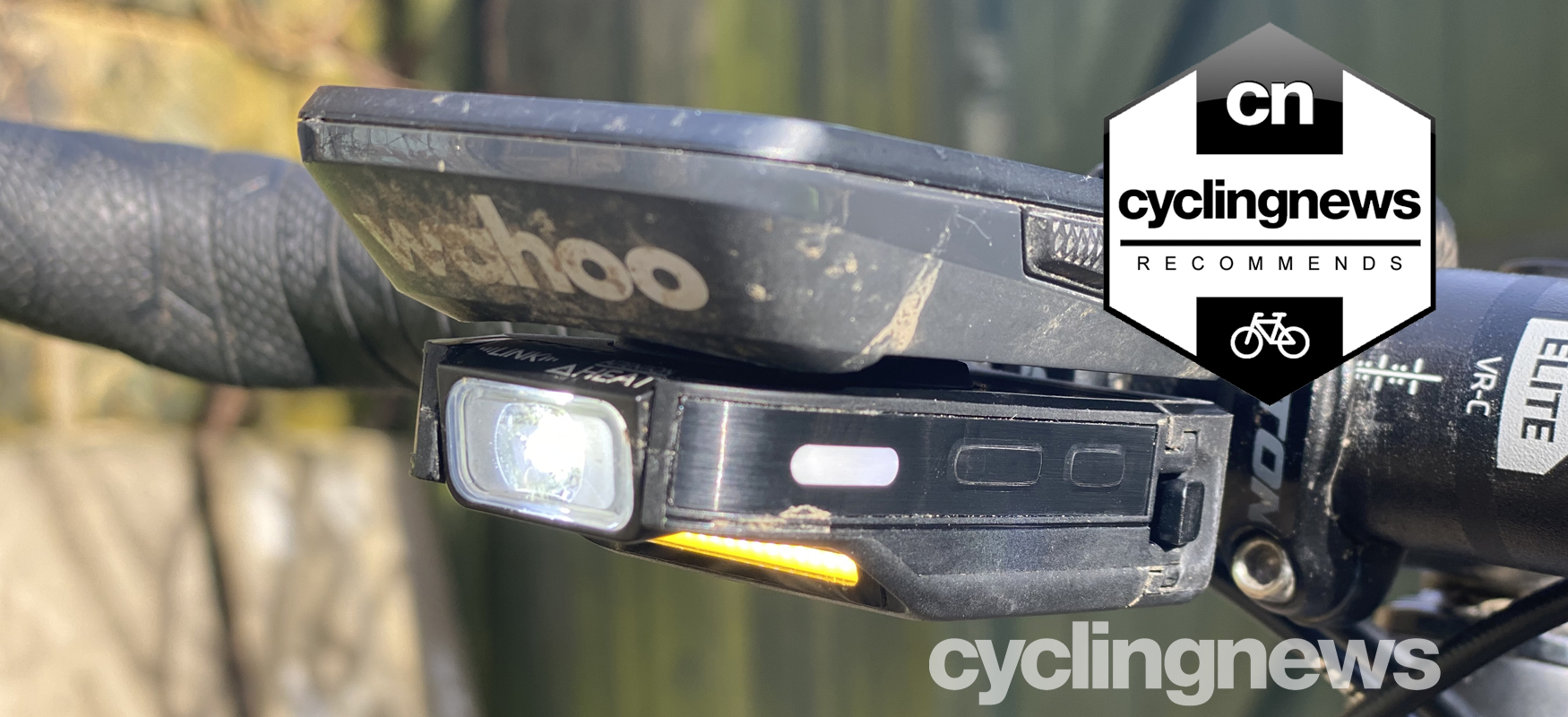Cyclingnews Verdict
Learn how they work and Moon’s hi-tech twin set is an awesome investment in very convenient and cleverly designed night time safety
Pros
- +
Very visible
- +
Surprisingly useable for cruising/commuting
- +
Plenty of modes
- +
Custom power options
- +
Very neat mount design
- +
Broad GPS integration
- +
Very fast recharge
- +
Front and rear ‘on’ link
- +
Weatherproof
- +
Great reliability record
Cons
- -
Expensive for power
- -
Round bar only as standard
- -
No front/rear mode syncing
You can trust Cyclingnews
Paired sets of front and rear lights are as old as riding itself and wirelessly connected options aren’t new either but Moon Light have loaded this neat pairing with tons of smart features as well as an integrated GPS mount. It’s expensive though and you’ll need to study the instructions to decipher it.
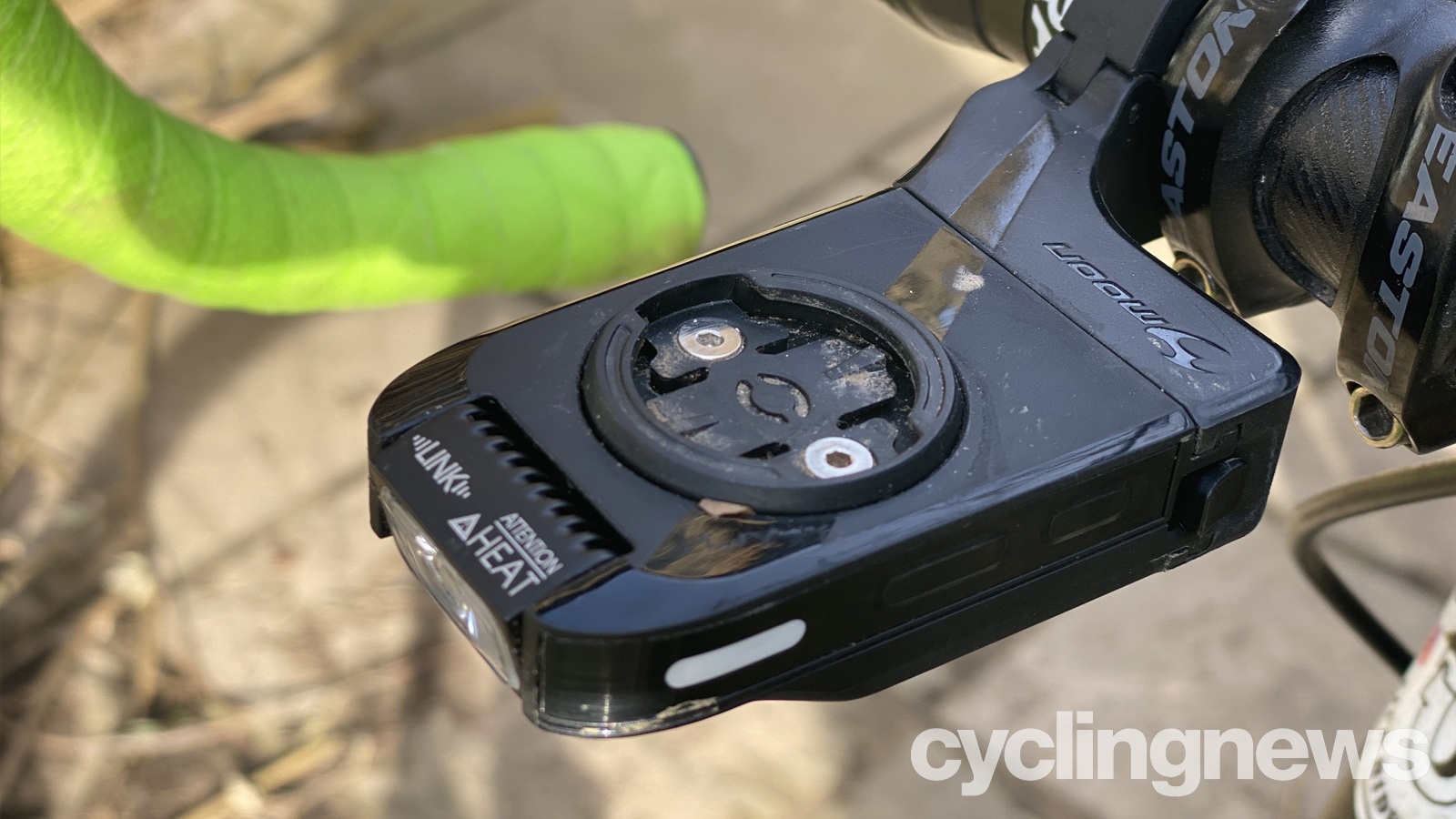
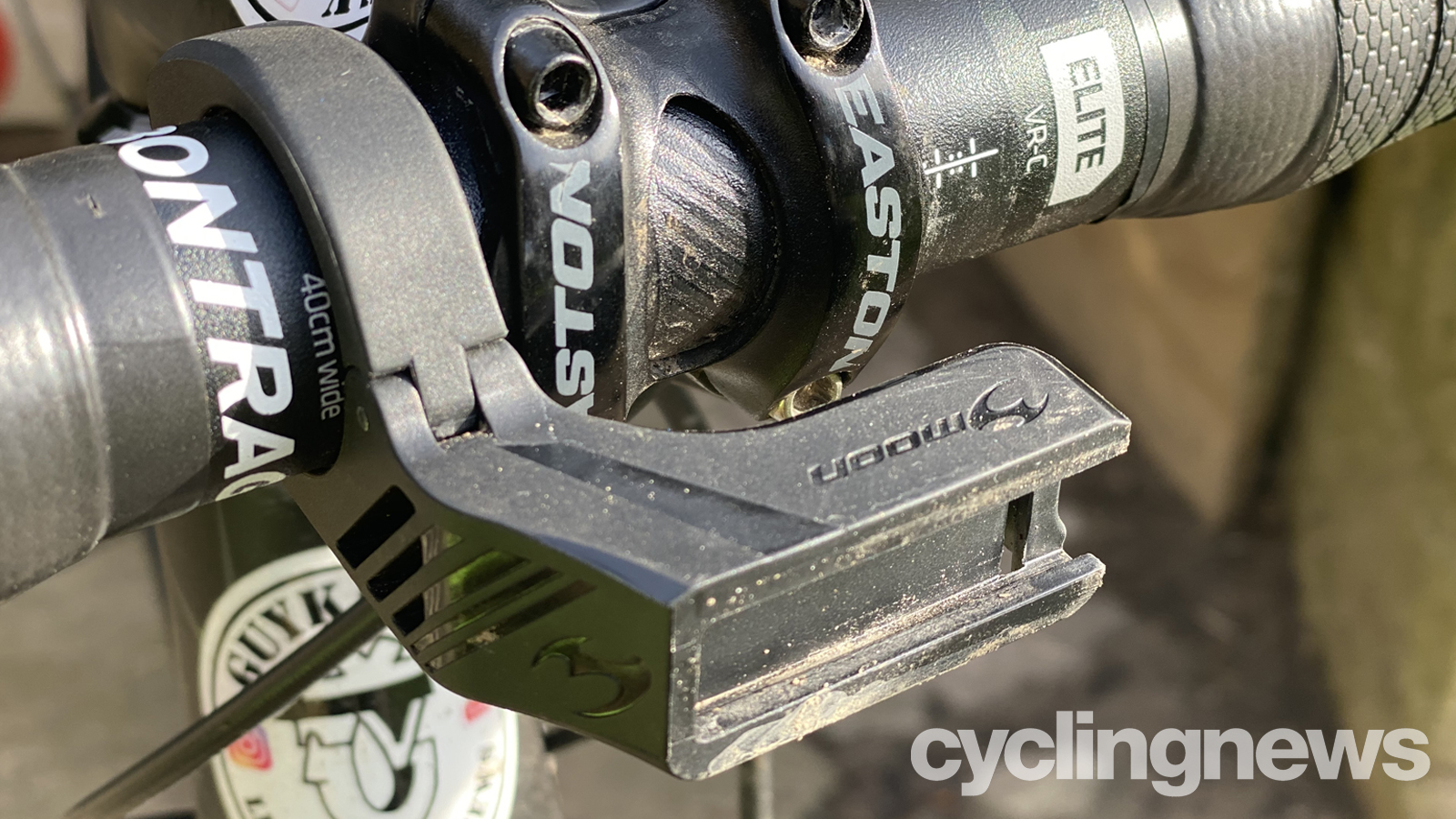
Moon MX
The MX just looks like a slightly chunky ‘out-front’ mount with switchable Garmin, Wahoo and Bryton inserts at first. The thicker body section hides a 1050 mAh Li-Po battery and USB-C recharging port under a rubber flap. This powers a single Cree XP-G2 LED bright white headlight in a tilting mount and then a second, warmer-colour COB strip LED for a bit of side awareness.
Once you’ve unlocked the light from transport mode and read through the instructions (it’s not a particularly intuitive set up) you’ll be able to access a range of modes (presuming you can find the flush fit buttons in the shadow of the GPS which is definitely awkward in gloves). These include three steady and up to four flashing modes from the headlight and COB together or each of them running separately. That gives a run time range of 1hr 30 mins (both lights at ‘Boost’ in cold conditions) or up to 30 hours in the SOS flash mode. You can even set your own light levels with the press and hold ‘Variable Lumen System’ and the front light comes on if you start the rear one or vice versa.
While it looks tiny, the headlight actually surprised us with how much we could see even on pitch black back roads as long as we were sensible with the speed. The COB LED also gives extra reduced contrast peripheral and just ahead of the front wheel illumination with less glare for wet/foggy nights. That means the MX is surprisingly usable on its own for commuting, cruising or riding in a group with more powerfully lit riders. Mostly though it’s a very visible safety boost for day or night riding as well as a solid mount for your GPS.
While the upside-down 2.5mm Allen key bolt on the supplied bar clamp needs care not to be dropped, it does make for a neat looking installation once tightened up. It only works on round 31.8mm bars though. That means if you have a shaped bar (or an oversized MTB one) you’ll have to hunt around for the direct stem bolt mount bracket. Either way, the actual light unit slides sideways off the mount for easy sub-3hr recharging so you don’t have to reposition it each time.
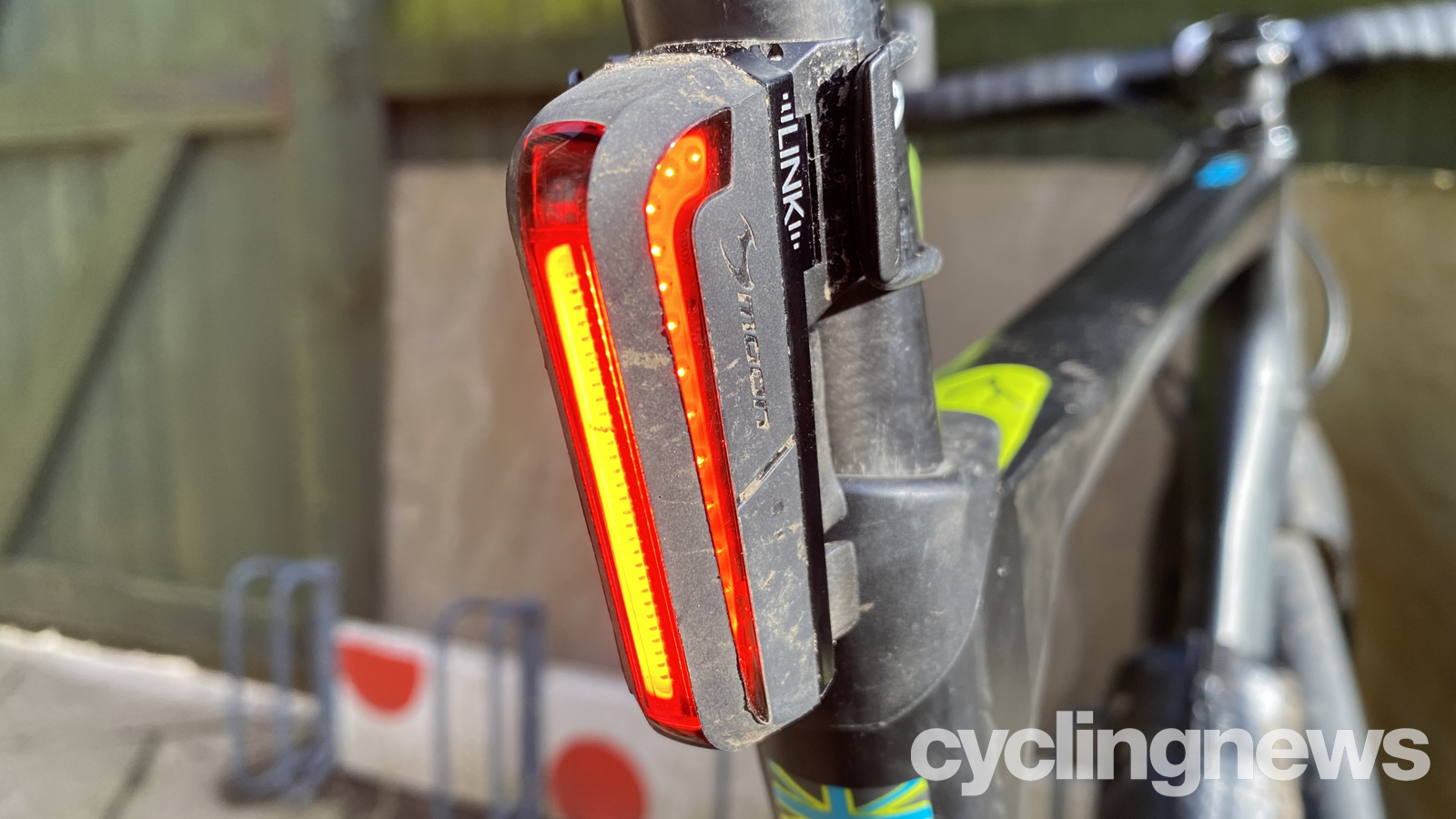
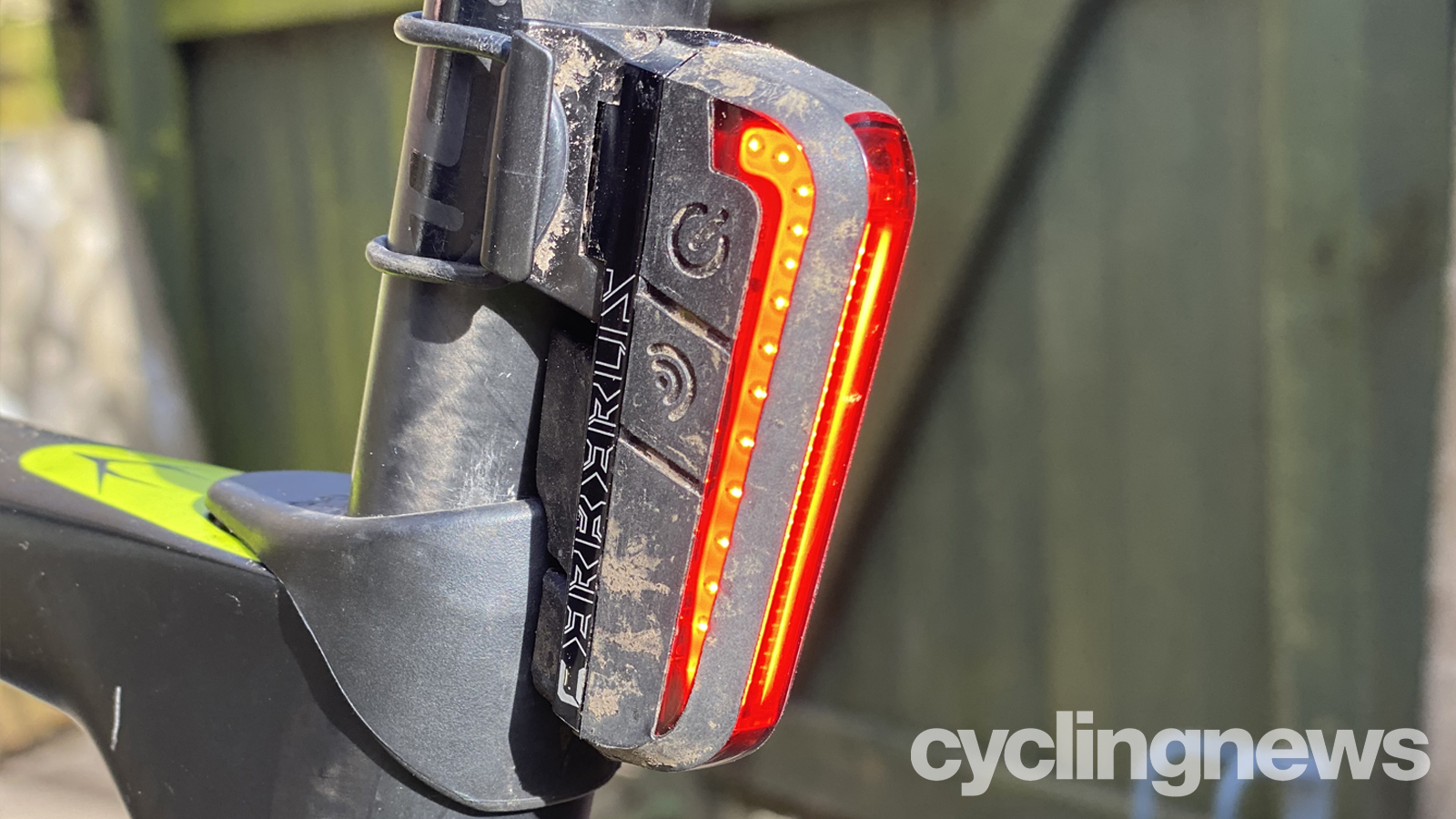
Cerberus rear light
The Cerberus light does the business at the far end of the bike with one rear LED and two side COB LED strips powered by a rechargeable 500mAh Li-Po battery. Again the flush side button is awkward to find in gloves, but it toggles through two solid and three flashing modes with a “press until you’re happy with the brightness” ‘Variable Lumen System’ setting too. With the 50Lm max in the solid modes, 100Lm in the standard flash modes and a brutally bright 150Lm max in the Daylight Flash mode, no one has an excuse for not seeing you.
The flanged rubber back pad means the narrow light design works with round or aero seat pins and you get three different sizes of O-Ring to cope with different diameters so a secure set up is easy. We’ve had no trouble with the IPX7 level weatherproofing either. Run times vary from 2 hours 30 minutes to 15 hours with a low battery warning light and very fast 2 hour recharge time via the included USB-C cable. The wireless link means switching on the Cerberus also wakes up the MX up front, but there’s no synced mode control.
Verdict
It’s certainly an expensive combo (you can get properly powerful front and rear light sets for less) but if you learn what it can do and you primarily want a ‘Be Seen’ rather than ‘See’ set up that integrates with your GPS unit then the MX/Cerberus team is definitely a top player with some great practical features. Moon Lights have proved impressively reliable over recent years too which is obviously crucial when it comes to safety.
Tech specs: Moon Light MX and Cerberus Link wireless connected light set
- Weight: 92g MX and bracket, 36g Cerberus
- Power: 400 Lm MX, 150 Lm Cerberus
- Price: £104.99 / $104.90
